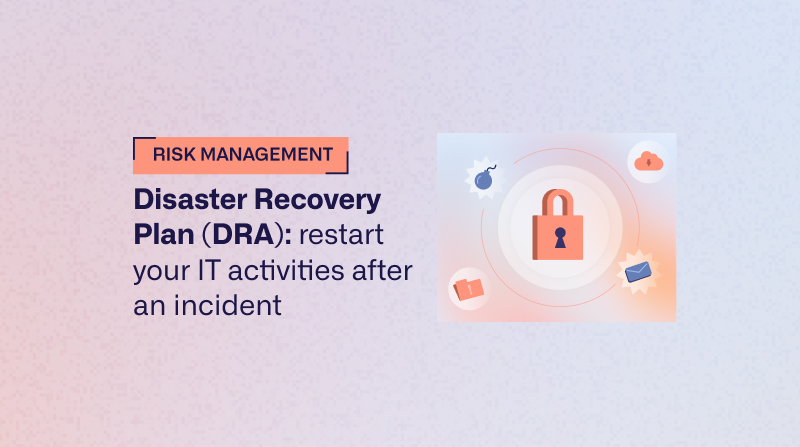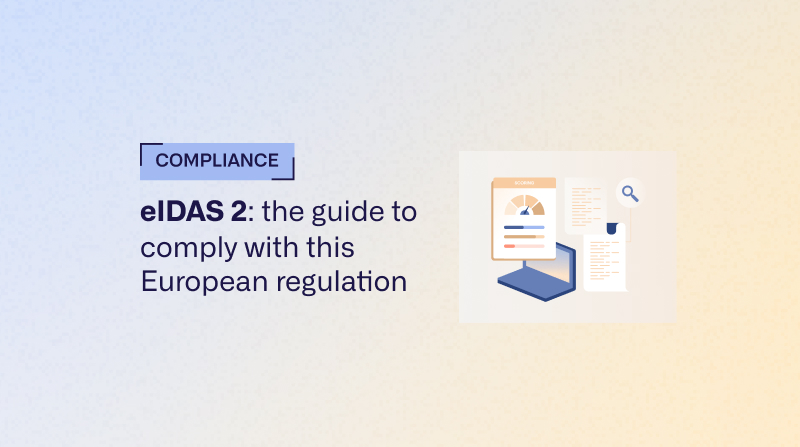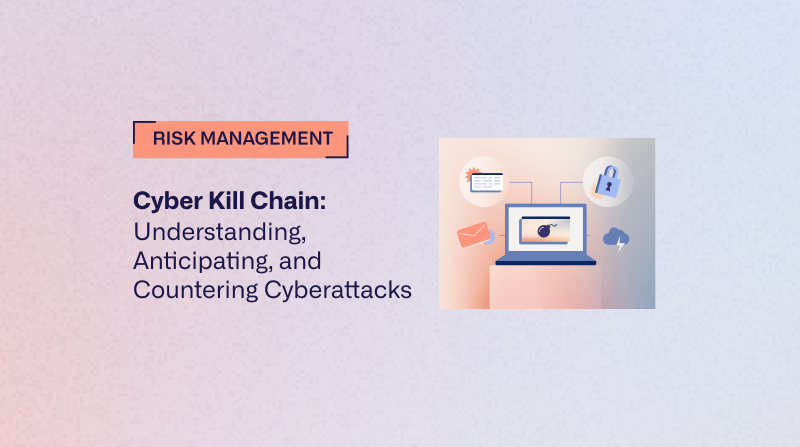Disaster Recovery Plan (DRA): restart your IT activities after an incident
A computer disaster can stop everything except a well-prepared business. The disaster recovery plan (DRA) is the key to restarting without losing your data or credibility.
In a context where the digitization of data and the dependence on critical applications are intensifying, businesses must know how to anticipate and prepare for an IT disaster. Cyberattacks, technical failures, human errors... These incidents can paralyze an organization in just a few hours.
That's where the Business Recovery Plan (DRA) comes in.) information technology: a strategic and operational device that makes it possible to quickly restore critical services after a major incident.
In this article, discover:
- The definition of PRA;
- Its essential role in the smooth running of any business, especially in terms of data security and compliance;
- The steps to establish a robust PRA;
- A concrete example of the implementation of the Business Resumption Plan.
What is an IT disaster recovery plan?
The Disaster Recovery Plan (DRA) is a set of technical and organizational procedures planned by a company to restore and maintain its activities after an incident. The causes of this incident may be technological (cyberattack, major failure...), human (error or malice) or natural (flood, fire, etc.).
Having become indispensable in any cybersecurity strategy, the PRA intervenes After the crisis, for Put infrastructures back into service in the shortest possible time. It thus makes it possible to reduce the impact of incidents as much as possible.
The challenges of the PRA are clear:
- Limiting operating losses;
- Maintain customer trust;
- Comply with regulatory obligations (especially in terms of data protection).
Common synonyms: IT restart plan, backup plan, IT continuity plan.
→ The implementation of a PRA is always based on a cyber risk analysis rigorous
Good to know: What is the difference between a PRA and a PCA?
The objective of the PRA and the PCA (Business Continuity Plan) is the maintenance of business activity. However, it is important to distinguish between these two closely linked practices.
While the IT PRA focuses on the conditions for resuming activity following a shutdown, the PCA aims to maintain the proper functioning of a company's critical activities. during and Right after disturbances.
The main difference between these two concepts therefore lies in the time required to recover data. With PRA, there is always a certain amount of time between disaster and recovery. For its part, the PCA ensures business continuity.
Why is PRA essential in any business strategy?
By promoting a rapid resumption of operations in the event of a major incident, the Business Resumption Plan makes it possible to limit the consequences, whether they are financial losses, theft of essential data, etc.
→ To concretely visualize the impact of a well-designed PRA on your risk indicators, ask for a demo of the Egerie platform.
Minimize service interruptions
The first objective of the PRA is to reduce downtime as much as possible after a disaster. Service interruptions can be particularly Expensive for businesses that are losing business opportunities. In the most serious cases, it can even endanger the sustainability of the organization.
If well designed, the PRA makes it easy to set up effective procedures to limit financial losses and maintain operational continuity.
Protecting sensitive data
The protection of critical data is another fundamental issue in the implementation of a PRA. Cyberattacks, hardware failures, and even human errors are among the most common risks affecting a business.
The plan should contain protection strategies, Of backup and to restore essential data to ensure that they remain accessible and intact, even in the event of a major disaster.
Remain compliant with regulations
In an increasingly demanding regulatory environment, businesses must ensure resilience and compliance with legal obligations Of their computer systems.
For example, regulations like NIS 2, DORA or even the RGPD impose strict standards on companies concerning business continuity. The PRA thus makes it possible to protect yourself against these legal risks andavoid sanctions in case of non-compliance.
In addition, by complying with these legal obligations, the company proves that it is committed to better cyber practices, which can also improve its competitiveness.
Ensuring the trust of customers and partners
A company that is able to recover quickly after a cyberattack or any other incident demonstrates its resiliency And her trustworthiness. A robust PRA thus makes it possible to demonstrate the preparation of a company in the face of possible crises.
This helps to maintain the trust of partners, customers and other stakeholders, but also to improve the global reputation of the company on the market.
Key steps to build an effective PRA
Setting up an IT PRA cannot be improvised. It is based on a structured approach in several steps.
- Identify risks and anticipate consequences
The first and essential step is to map risks and to assess the severity of the threats.
To do this, the company must carry out a cyber risk analysis which may include:
- Technological risks (failure, piracy...);
- Human risks (errors, malice...);
- Natural risks (bad weather).
By accurately mapping risks and analysing their impact on business, businesses can limit their impact.
This analysis should be carried out in collaboration with IT, business and security teams to ensure a comprehensive view of risks.
- Define RTO and RPO goals
Two indicators are essential in a PRA:
- Recovery Time Objectives - RTO (“Recovery Time Objective”): this is the maximum acceptable period of interruption before activities resume.
- Recovery Point Objectives - RPO (“Recovery Point Objective”): it defines the point at which data is restored after an incident (until what date/time the data should be recoverable). In other words, it represents the maximum amount of data that a business can afford to lose without harming its business.
These parameters guide the strategic choices of the company.
- Develop recovery scenarios
The PRA necessarily includes recovery strategies.
To define them, businesses must simulate different types of incidents (cyber attack, server failure, physical disaster), define the associated procedures and the responsibilities of each actor.
In particular, the various scenarios should include:
- An internal and external communication plan;
- The use of the cloud for data backup;
- The establishment of redundant systems, etc.
- Implement technical recovery methods
Technical solutions vary according to the size and requirements of the business. For example:
- Outsourced backups (on-premise + hybrid cloud);
- backup servers;
- virtualization technologies;
- Replication of data in real time;
- Automation of flip-flops between environments, etc.
The aim is to minimize recovery time While ensuring data integrity.
- Writing and documenting the PRA
The PRA should be concise, understandable, and reachable for the whole team, even if the main information system is unavailable.
The PRA must be written in a formal manner and must in particular specify:
- Incident scenarios and corresponding detailed strategies and procedures;
- The action protocols and responsibilities of each collaborator involved.
- Test and update the plan
The IT PRA must adapt to the various technological and operational changes of the company, but also to therapidly evolving cyber threats.
To stay viable and relevant, it must therefore be tested regularly to verify:
- The effectiveness and feasibility of the plan;
- Responsiveness and coordination of teams.
It may be periodic tests, of simulations And ofPractical exercises for resumption. Regularly testing the plan makes it possible to identify the differences between theory and reality, and then update accordingly.
💡 Key Takeaway: An effective PRA must answer three fundamental questions:
- What to restore? (critical systems and data)
- How do I restore? (with what resources and priorities)
- In what timeframe? (while respecting the recovery objectives set)
Best practices for an effective PRA
- Involve all stakeholders : the feasibility and consistency of the PRA must be approved by the various professions and management.
- Documenting and training : make sure that the procedures are known, understandable and accessible to everyone. Communication with the various stakeholders must be transparent and regular.
- Segmenting responsibilities : clearly designate managers by area (infrastructure, communication, compliance, etc.).
- Automate as much as possible : to limit the risk of error, reduce manual interventions as much as possible.
- Test under realistic conditions : simulators, crisis exercises, controlled cuts...
- Update regularly : An outdated PRA is as risky as the absence of a PRA: the update must be integrated into your GRC approach to remain compliant and resilient.
Concrete example of a Business Recovery Plan (DRA) in the event of a cyber attack
Take the case of an SME that is the victim of a Ransomware encrypting its entire production server. Without PRA, it would have had to rebuild its infrastructure from scratch, losing several days of operation and critical data.
Thanks to its PRA tested three months earlier:
- Les cloud backups have allowed a restore systems in under 6 hours.
- Les production data were recovered with only 30 minutes of loss (RPO = 30 min).
- The secondary site took over while the main server was rehabilitated.
- The company was able to restart activities the same day.
The result: losses are limited, no data leaks to report, and customer trust is maintained.
This example shows that a PRA tested regularly not only makes it possible to restart more quickly, but also to reduce costs and maintain the company's reputation.
Integrate PRA into your GRC approach with Egerie
The PRA is an essential lever in business resilience in the face of cyberattacks, hardware failures or natural disasters. But he doesn't have to live in silos.
In an approach CRM (Governance, Risk and Compliance), it is part of a larger framework of risk management And of strategic continuity :
- The risks identified in the risk mapping feed into the PRA scenarios.
- PRA tests in turn contribute to risk knowledge and improvement plans.
- The PRA facilitates compliance with regulations, such as the RGPD, and thus simplifies compliance audits.
This integrated approach turns the PRA into a real digital continuity management tool and as an indicator of a company's cyber maturity.
A platform like Egerie allows you to go further in the operational resilience of your business.
With Egerie, you can:
- Easily identify and map your cyber risks ;
- Simulate various incident scenarios to anticipate their operational, financial and regulatory consequences;
- Ensuring ongoing compliance thanks to dynamic dashboards, updated in real time;
- Develop a prioritized action plan, based on the real exposure of your organization to risks;
- Facilitate decision making for managers with clear, synthetic and action-oriented reports.
Request a demo of the Egerie platform now : discover how to integrate your PRA into a GRC approach and ensure consistency between the technical, organizational and regulatory aspects of your cyber strategy.
Disaster Recovery Plan FAQ
What is the difference between PRA and PCA?
The BY intervenes thereafter an incident to restore the systems, while the PCA aims to maintain activity during and just after the crisis. The PRA is therefore a component of the PCA that has a wider scope.
How often should a PRA be tested?
A complete test must be carried out at least once a year, or after any major change in the information system (migration, new infrastructure, etc.).
Which businesses need to establish a PRA?
All businesses are affected. SMEs, ETI, local authorities and large groups depend on the proper functioning of their information system. The PRA adapts to the size and resources of each organization.
What are the main indicators to monitor?
Les RTO (recovery time), RPO (maximum data loss), and the test success rate are the key performance indicators of a PRA.








